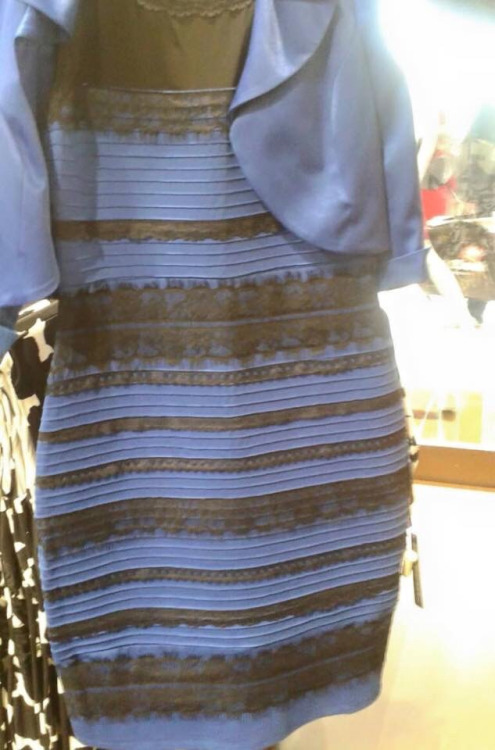As often happens on the Internet, especially in today’s social media era, a seemingly trivial post goes viral. Last week, it was What Colors Are This Dress? – a post by a Tumblr user named swiked (which was then posted and promoted on BuzzFeed) where she included the image of the dress below and the following plea: “guys please help me – is this dress white and gold, or blue and black? Me and my friends can’t agree and we are freaking the f*** out.”

And so began a raging debate, with millions of people divided into the “white and gold” and “blue and black” camps. And the debate wasn’t only happening online, but in workplaces and schools too (my 12 year old son told me they were talking about it at his school). Wired even published an article providing a scientific explanation for why people were seeing different colors, stating that “this fight is about more than just social media—it’s about primal biology and the way human eyes and brains have evolved to see color in a sunlit world.”
On the one hand, this was a silly, time-wasting debate that will flame out as quickly as it was ignited. But on the other hand, it revealed a universal truth: two or more people can look at the same thing – such as a dress, a political issue, or a relationship – and see it in completely different ways, depending on what light (literally and figuratively) we shine on it.
I remember, for example, attending a wedding many years ago, and one of my wife’s friends brought her boyfriend at the time as her date. During the rehearsal dinner, the boyfriend was hanging out with guys at the bar, telling us how he and K were happy and heading down the engagement path. Meanwhile, at the same dinner, K was telling my wife and the rest of the women how she was planning to break up with her boyfriend when they got back home. He saw the relationship as white and gold, she saw it as blue and black.
When you shine a light on your supply chain, what colors do you see? And just as importantly, what colors do your suppliers, customers, 3PLs, and other trading partners see?
Every year, Gartner publishes its Top 25 Supply Chains list, and every year it generates plenty of debate because not everyone looks at the industry in the same light. For example, would you consider Apple, the number one company on Gartner’s list, as having a top supply chain if you viewed them from a supplier relationship management standpoint? Or a sustainable supply chain perspective?
How would your CFO describe the color of your supply chain compared to the CFO at one of your suppliers, especially if you’ve been delaying payments?
If you asked your VP of Transportation, a truck driver, and the president of a trucking company about the color of your transportation operations, would they all see the same thing?
What colors do your customers and your colleagues in Manufacturing, Procurement, Customer Service, and Quality see when they look at your supply chain?
The key takeaway from this viral post – a reminder, really – is that a single perspective does not define the true color of something. The dress is white and gold, and blue and black, and whatever other colors people see. Perception is reality, as the saying goes, and this is true in supply chain management, where depending on whom you ask, your supply chain is best in class and innovative, worst in class and outdated, and everything else in between.
So, gather all your internal and external stakeholders together, put a prism to your supply chain, and see what colors (and more importantly, what conversations) emerge.










